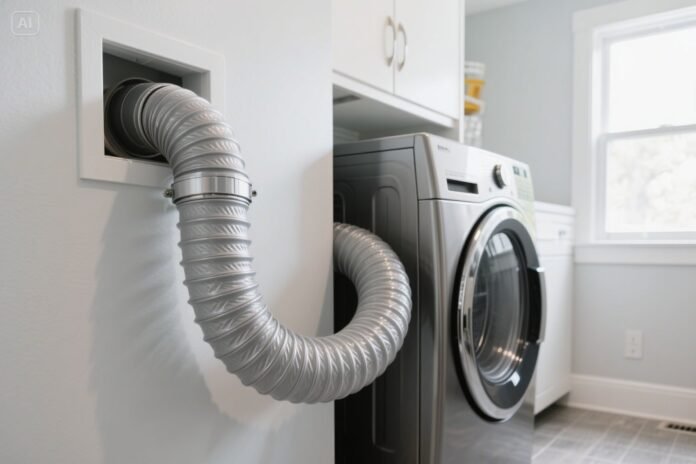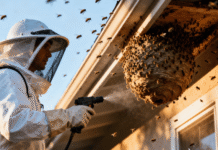Last Updated on December 22, 2025 by Rida Gul
Table of Contents
Introduction
The dryer vent hose is an essential part of any dryer setup, designed to expel hot air and lint outdoors safely. Mold, fire risks, and increased energy costs all result from stored moisture that is not properly ventilated. This article explains everything you need to know—why the dryer vent hose matters, how to choose the right type, and how to install, clean, or replace it. From foil flex hoses to rigid metal ducts, each type has pros and cons. Knowing when to clean or upgrade your vent hose helps your dryer run better, last longer, and stay safe. Let’s explore how to make the smartest choice for your home.
| Basics | Summary |
| Purpose | Vents hot air and lint safely outdoors. |
| Safety | Prevents fire, mold, and overheating. |
| Efficiency | Speeds drying and saves energy. |
| Longevity | Extends dryer lifespan. |
| Foil Hose | Cheap, flexible, but fragile. |
| Semi-Rigid Hose | Durable and good airflow. |
| Rigid Duct | Safest, most efficient. |
| Plastic Hose | Fire hazard—avoid it. |
| Length Matters | Shorter hoses are better. |
| Material Choice | Use metal, not plastic. |
| Fit | Must match dryer and vent. |
| Code Safe | Use approved venting. |
| Prep Work | Unplug, measure, clean. |
| Install Steps | Clamp ends, keep straight. |
| Cleaning | Clean twice yearly. |
| Replace When | Replace if damaged or plastic. |
Why the Dryer Vent Hose Is Important?
A dryer vent hose is more than just a connector—it’s a safety feature. Without it, hot air and lint stay inside your home, increasing the risk of mold or fire. Proper ventilation ensures your dryer runs efficiently and doesn’t overheat. It also reduces energy waste and drying time. Having a functional vent hose protects your appliance and your home, making it a critical part of regular household maintenance.
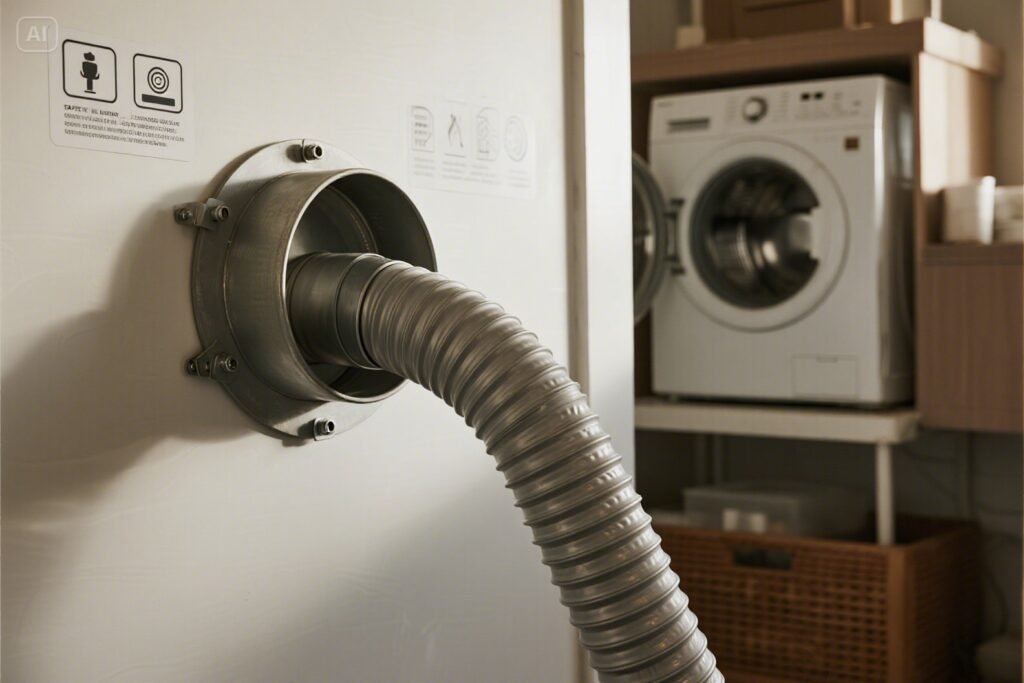
Common Types
There are various dryer vent hose options, each with pros and cons:
- Foil Flex Hose: Flexible and reasonably priced, but less resilient and more likely to break.
- Semi-Rigid Hose: Offers better airflow and durability, suitable for most homes.
- Rigid Metal Duct: Safest and most efficient, but less flexible, ideal for permanent setups.
- Plastic Hose: Not recommended due to high fire risk and building code restrictions.
- Always choose the safest and most suitable type for your space.
Choosing the Right
To pick the best dryer hose for your home, consider these points:
- Length & Space: Shorter, straighter hoses improve airflow.
- Material: Go for metal ducts—rigid or semi-rigid—for safety and longevity.
- Compatibility: Ensure the hose fits your dryer’s outlet and wall vent properly.
- Local Codes: Use hoses that meet safety and building requirements.
- Usage Needs: For heavy use, select high-durability hoses with secure connections.
These pointers contribute to safe and effective dryer operation.
How to Install?
Preparation Steps
Unplug the dryer and move it away from the wall before attaching a dryer vent pipe. Make sure you have clamps, a screwdriver, and the correct hose size. Measure the distance between the dryer and the wall vent. Trim the hose if needed. Clear out any existing lint or dust from the exhaust outlet to prevent future clogs. Preparation ensures a smoother, safer, and faster installation process with fewer problems later on.
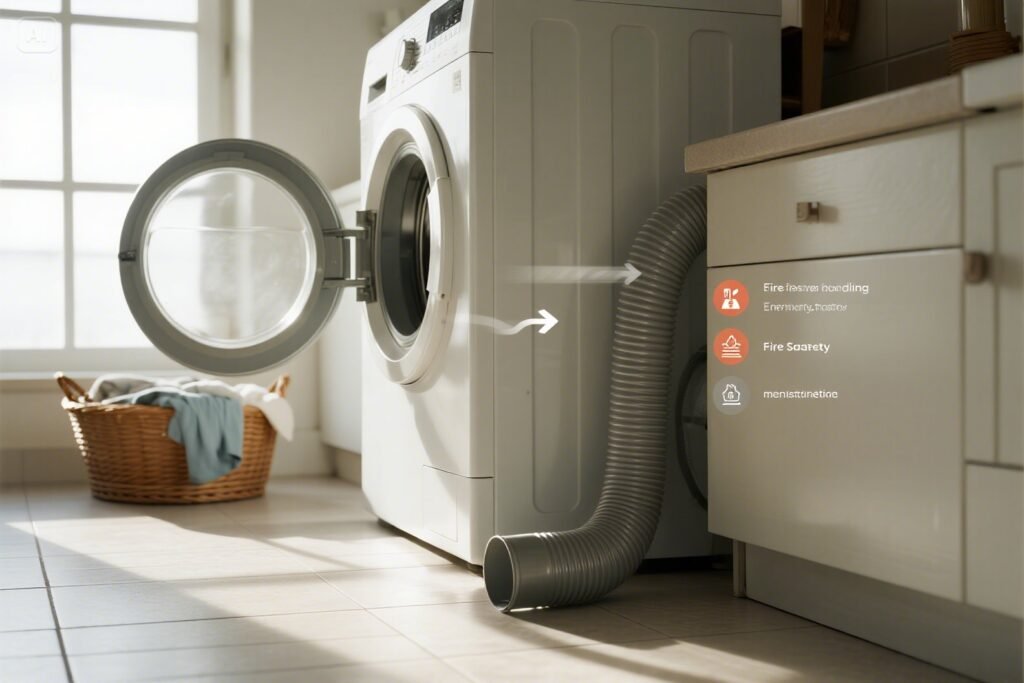
Installation Process
Secure the dryer vent pipe with a clamp after attaching one end to the exhaust port. Connect the other end to the wall or floor vent, also using a clamp. Make sure the hose has no kinks or bends, which restrict airflow. The shorter and straighter the hose, the better the dryer will perform. Once installed, plug in the dryer and test airflow at the outside vent location.
Cleaning and Maintenance Tips
to Clean the Hose
To clean your dryer vent hose, unplug the dryer and detach the hose from both ends. Use a vacuum or vent brush to remove lint from inside. Clean the outside vent flap, too. If you find thick buildup, soak the hose in soapy water. Let everything dry completely before reconnecting. Regular cleaning every 6 months improves dryer performance, reduces energy use, and helps prevent fire hazards linked to lint buildup.
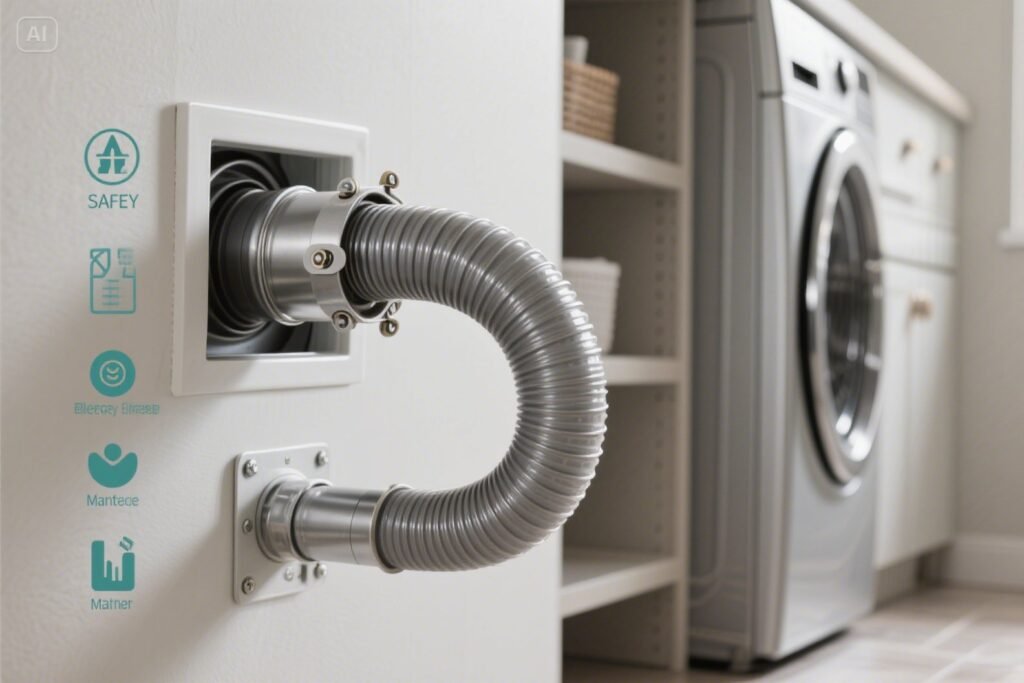
Signs It Needs Cleaning
Common signs your dryer vent hose needs cleaning include longer drying times, clothes that feel hot but still damp, or a burning smell. You might also notice lint gathering around the dryer or outside vent—a clogged hose strains your dryer, increasing wear and energy costs. If you see any of these signs, clean the hose immediately to avoid safety risks and restore efficient dryer performance in your laundry space.
When to Replace?
You should replace a dryer vent hose if it’s cracked, torn, clogged, or made of unsafe material like plastic. Signs include reduced dryer efficiency, excessive heat, or visible lint buildup. If your hose is more than five years old, consider replacing it with a metal alternative. Upgrading to a rigid or semi-rigid hose improves safety, airflow, and energy efficiency. Regular inspections help you catch damage early before it becomes a bigger issue.
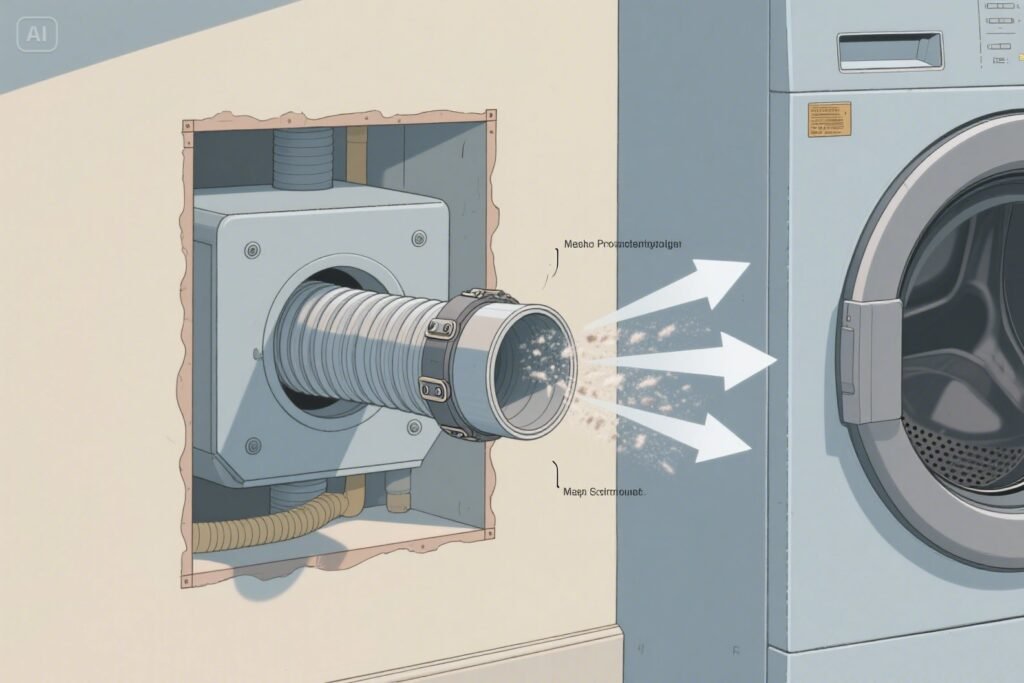
Conclusion
In conclusion, a dryer vent hose is more than a simple attachment—it’s essential for safety, energy efficiency, and dryer performance. Choosing the right type, installing it properly, and maintaining it regularly can prevent fire hazards, reduce wear, and save energy. Whether you’re upgrading an old hose or installing a new one, focusing on proper ventilation protects your home and your appliance. Make your dryer safer and more effective with the proper dryer vent hose.
Want to know about “Common Lawn Problems” Check out our “Home Improvement” category.
FAQs
A dryer directs hot air and lint safely outside, preventing fire risks and improving dryer efficiency by ensuring proper airflow during drying cycles.
Clean your vent hose at least every six months to remove lint buildup, which helps maintain airflow, prevents fires, and improves drying performance.
Metal hoses, such as rigid or semi-rigid ducts, are safest. Avoid plastic or foil hoses due to fire hazards and local building codes.
Replace the hose if it is cracked, torn, clogged, or older than five years, especially if it’s plastic or shows signs of damage that could reduce dryer efficiency.














